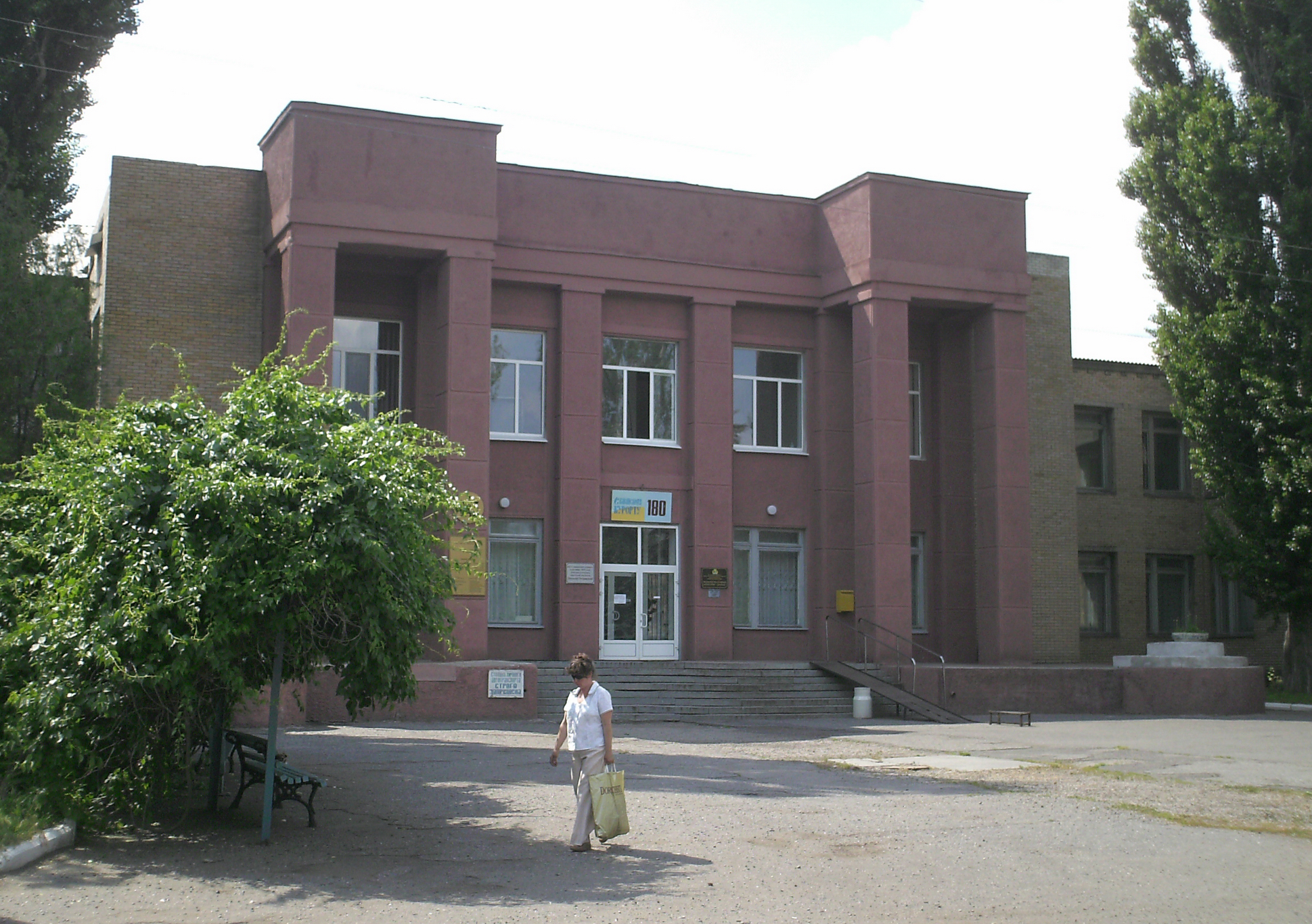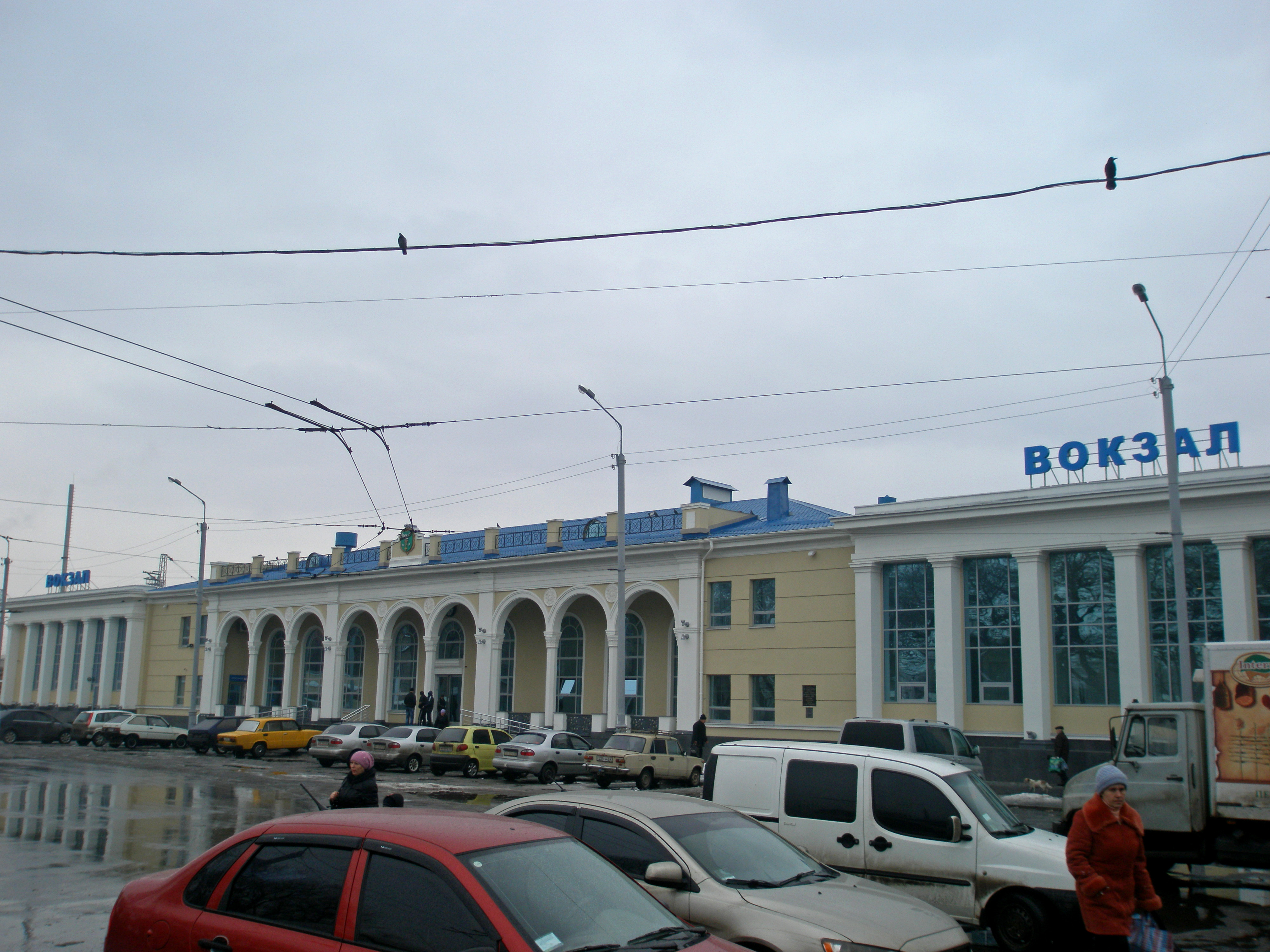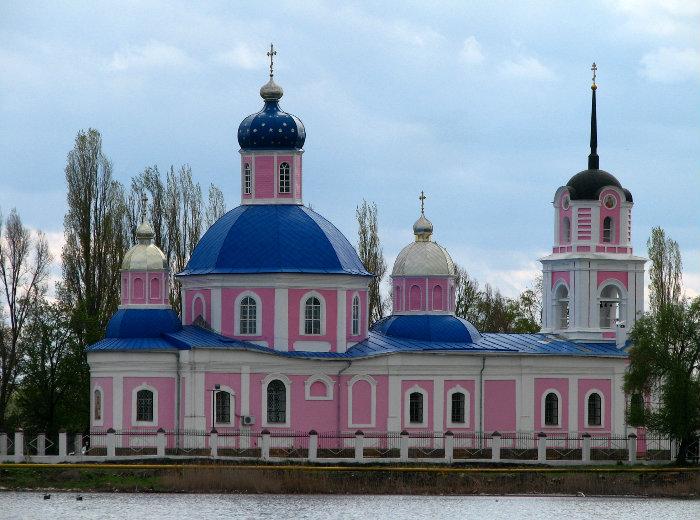Slovjansk on:
[Wikipedia]
[Google]
[Amazon]
Sloviansk ( uk, Слов'янськ, Sloviansk ; russian: Славянск, Slavyansk or ; prior to 1784 – Tor) is a city in the Kramatorsk district of the Donetsk region of Ukraine, the administrative center of the Slovyansk urban community. The city lies in the north of the region, in the valley of the Kazennyi Torets river. As of July 2022, the population of the city was around 24,000.
Sloviansk was one of the focal points in the early stages of the 2014 pro-Russian conflict in Ukraine as it was the first city to be seized by Russia-backed military troops. It was retaken by Ukrainian forces in July 2014. Sloviansk has a population of .
/ref>
 The principal industry of the city concerns machine building:
* The Slovvazhmash heavy-machinery production plant which produces chemical equipment for coke production and use for the businesses in Lipetsk, Kemerovo and Cherepovets. Companies in Mariupol, Kryvyi Rih, Donetsk, and Kamianske use their products.
* The Betonmash machine-building factory which produces concrete mixing plants, spare parts for mining equipment and metal works, parts for coke ovens. The factory provides foundry services for companies across Donetsk Oblast, Kharkiv Oblast, and Dnipropetrovsk Oblast.
* The Sloviansk mechanical plant which employs approximately four hundred people. It produces chemical equipment for coke production as well as overhead cranes and other machinery.
* The Artem Armature-insulator factory.
* A factory producing high-voltage insulators for hydroelectric power stations and thermal power-stations.
Sloviansk is an important health resort, providing spa treatments and mud baths using mud from the bottom of salt lakes located nearby.
The principal industry of the city concerns machine building:
* The Slovvazhmash heavy-machinery production plant which produces chemical equipment for coke production and use for the businesses in Lipetsk, Kemerovo and Cherepovets. Companies in Mariupol, Kryvyi Rih, Donetsk, and Kamianske use their products.
* The Betonmash machine-building factory which produces concrete mixing plants, spare parts for mining equipment and metal works, parts for coke ovens. The factory provides foundry services for companies across Donetsk Oblast, Kharkiv Oblast, and Dnipropetrovsk Oblast.
* The Sloviansk mechanical plant which employs approximately four hundred people. It produces chemical equipment for coke production as well as overhead cranes and other machinery.
* The Artem Armature-insulator factory.
* A factory producing high-voltage insulators for hydroelectric power stations and thermal power-stations.
Sloviansk is an important health resort, providing spa treatments and mud baths using mud from the bottom of salt lakes located nearby.
 Sloviansk is a nexus of a number of railways and roads. There are three railway stations currently in use, one defunct. Three railway lines leave the city in directions of Lozova, Lyman, Ukraine, Lyman and Kramatorsk.
Ukrainian international highway goes by the edge of Sloviansk. The national highway N-20 leaves from the city toward Mariupol. The local population is served by a trolleybus network consisting of two permanent routes and one summer route. Marshrutkas are widely used.
Sloviansk is a nexus of a number of railways and roads. There are three railway stations currently in use, one defunct. Three railway lines leave the city in directions of Lozova, Lyman, Ukraine, Lyman and Kramatorsk.
Ukrainian international highway goes by the edge of Sloviansk. The national highway N-20 leaves from the city toward Mariupol. The local population is served by a trolleybus network consisting of two permanent routes and one summer route. Marshrutkas are widely used.
 Christian churches:
* Cathedral of New Martyrs and Confessors of the Russian Orthodox Church
* Church of the Resurrection of Jesus, Resurrection of Christ
* Church of the Andrew the Apostle
* Church of Oleksandr Nevskyi
* Church of Seraphim of Sarov, Seraphim Sarovsky
* The "Kind New" Christian Center Church
* Church of Jesus Christ of the Protestant Church of Ukraine
Christian churches:
* Cathedral of New Martyrs and Confessors of the Russian Orthodox Church
* Church of the Resurrection of Jesus, Resurrection of Christ
* Church of the Andrew the Apostle
* Church of Oleksandr Nevskyi
* Church of Seraphim of Sarov, Seraphim Sarovsky
* The "Kind New" Christian Center Church
* Church of Jesus Christ of the Protestant Church of Ukraine
Official website
*
Unofficial website of Slavjansk Trolleybus system
{{Authority control Sloviansk, Cities in Donetsk Oblast Izyumsky Uyezd Populated places established in 1645 Populated places established in 1676 Articles containing video clips Cities of regional significance in Ukraine 1676 establishments in Ukraine Holocaust locations in Ukraine Cities and towns built in the Sloboda Ukraine Populated places established in the 17th century Kramatorsk Raion
History
The history of Sloviansk dates back to 1645 when Russian Tsar Alexis of Russia, Alexei Romanov founded a Zasechnaya cherta, border fortress named Tor against the Crimean-Nogai raids into East Slavic lands, Crimean attacks and slave raids on the southern suburbs of modern Ukraine and Russia. In 1664, a first salt plant for the extraction of salt was built, and workers settled in the area. In 1676, a fortress named Tor was built at the confluence of the Kazenyy Torets and Sukhyy Torets River, where they form the Torets River, a tributary of Donets River. Shortly thereafter, the town of Tor grew up next to the fortress. As several salt lakes were located close by, the town became a producer of salt. During the sixteenth century, salt production was the principal local industry. During the eighteenth century, it became unprofitable and salt production ceased in 1782. In 1784, the city was renamed Sloviansk. It became a part of the Kharkov Governorate of the Russian Empire in 1797. A resort was established on the shores of Lake Ropne in 1832. In April 1918, troops loyal to the Ukrainian People's Republic took control of Sloviansk. The city was occupied by the Nazi Germany, Germans on 28 October 1941. In December 1941, the SS Einsatzkommando#Einsatzkommando 4b, Einsatzkommando 4b executed more than a thousand Jews who lived in Sloviansk. The Red Army temporarily expelled the Nazi occupiers on 17 February 1943. Germans retook it on 1 March 1943. The Red Army retook Sloviansk on 6 September 1943.2014 clashes
On 12 April 2014, during the ongoing crisis following the 2014 Ukrainian revolution, masked men in army fatigues and bulletproof vests armed with Kalashnikov assault rifles captured the executive committee building, the police department, and the Security Service of Ukraine, SBU office in Sloviansk. Ukrainian Interior Minister Arsen Avakov (politician), Arsen Avakov described the gunmen as "terrorists" and vowed to use the Ukrainian special forces to retake the building. On 13 April 2014, there were reports of fighting between the gunmen and Ukrainian troops, with casualties on both sides. The BBC's David Stern described the pro-Russian forces as carrying Russian weapons and resembling the soldiers that took over Crimean installations at the start of the 2014 Crimean crisis. On 29 May 2014, a helicopter carrying fourteen army soldiers, including General Serhiy Kulchytsky, Serhiy Kulchytskiy – the head of combat and special training for Ukraine's National Guard, crashed after being shot down by militants near Sloviansk. Ukraine's outgoing President Olexander Turchynov described the downing as a "terrorist attack," and blamed pro-Russian militants. Sloviansk was held by Russian-backed separatists until 5 July 2014. When pressed by the Ukrainian army they retreated from Sloviansk and pulled back to Donetsk city. In 2015, a plaque to the memory of Volodymyr Ivanovych Rybak, Volodymyr Rybak was placed in the town center.2022 Russian Invasion of Ukraine
During the 2022 Russian invasion of Ukraine, 2022 Invasion of Ukraine, Sloviansk is a pivotal city on the eastern front, as part of a second phase of the war, following the Russian retreat from Kyiv offensive (2022), Kyiv. Russian forces seized the strategic town of Izyum and used it as a staging post to attack Slovyansk, to the south. The town of Slovyansk is thought to be critical to Moscow’s objective of capturing all of eastern Ukraine due to its west-central location in the Donbas "pocket" of remaining Ukrainian forces. On 4 July, ''The Guardian'' reported that after the fall of the Luhansk oblast, that Russian invasion troops would continue their invasion into the adjacent Donetsk oblast to attack the cities of Sloviansk and Bakhmut.Sam Jones. "Putin declares victory in Luhansk after fall of Lysychansk". ''The Guardian''. 4 July 2022/ref>
September
In early September 2022, Ukraine began a major 2022 Ukrainian Kharkiv counteroffensive, counteroffensive, regaining several settlements in the Kharkiv region. This relieved the pressure on Sloviansk with the Second Battle of Lyman, fall of Lyman to Ukrainian forces on October 1, 2022.Demographics
According to the 2001 Ukrainian Census: Total population: 141,066Climate
The climate in Sloviansk is a Humid continental climate#Dfb/Dwb/Dsb: Mild to warm summer subtype, mild to warm summer subtype (Köppen climate classification, Köppen: ''Dfb'') of the humid continental climate.Economy
 The principal industry of the city concerns machine building:
* The Slovvazhmash heavy-machinery production plant which produces chemical equipment for coke production and use for the businesses in Lipetsk, Kemerovo and Cherepovets. Companies in Mariupol, Kryvyi Rih, Donetsk, and Kamianske use their products.
* The Betonmash machine-building factory which produces concrete mixing plants, spare parts for mining equipment and metal works, parts for coke ovens. The factory provides foundry services for companies across Donetsk Oblast, Kharkiv Oblast, and Dnipropetrovsk Oblast.
* The Sloviansk mechanical plant which employs approximately four hundred people. It produces chemical equipment for coke production as well as overhead cranes and other machinery.
* The Artem Armature-insulator factory.
* A factory producing high-voltage insulators for hydroelectric power stations and thermal power-stations.
Sloviansk is an important health resort, providing spa treatments and mud baths using mud from the bottom of salt lakes located nearby.
The principal industry of the city concerns machine building:
* The Slovvazhmash heavy-machinery production plant which produces chemical equipment for coke production and use for the businesses in Lipetsk, Kemerovo and Cherepovets. Companies in Mariupol, Kryvyi Rih, Donetsk, and Kamianske use their products.
* The Betonmash machine-building factory which produces concrete mixing plants, spare parts for mining equipment and metal works, parts for coke ovens. The factory provides foundry services for companies across Donetsk Oblast, Kharkiv Oblast, and Dnipropetrovsk Oblast.
* The Sloviansk mechanical plant which employs approximately four hundred people. It produces chemical equipment for coke production as well as overhead cranes and other machinery.
* The Artem Armature-insulator factory.
* A factory producing high-voltage insulators for hydroelectric power stations and thermal power-stations.
Sloviansk is an important health resort, providing spa treatments and mud baths using mud from the bottom of salt lakes located nearby.
Administration
Sloviansk served as the administrative center of the Sloviansk Raion (raion, district) until its abolition on 18 July 2020, though it did not belong to the raion.Transport
 Sloviansk is a nexus of a number of railways and roads. There are three railway stations currently in use, one defunct. Three railway lines leave the city in directions of Lozova, Lyman, Ukraine, Lyman and Kramatorsk.
Ukrainian international highway goes by the edge of Sloviansk. The national highway N-20 leaves from the city toward Mariupol. The local population is served by a trolleybus network consisting of two permanent routes and one summer route. Marshrutkas are widely used.
Sloviansk is a nexus of a number of railways and roads. There are three railway stations currently in use, one defunct. Three railway lines leave the city in directions of Lozova, Lyman, Ukraine, Lyman and Kramatorsk.
Ukrainian international highway goes by the edge of Sloviansk. The national highway N-20 leaves from the city toward Mariupol. The local population is served by a trolleybus network consisting of two permanent routes and one summer route. Marshrutkas are widely used.
Religious organizations
 Christian churches:
* Cathedral of New Martyrs and Confessors of the Russian Orthodox Church
* Church of the Resurrection of Jesus, Resurrection of Christ
* Church of the Andrew the Apostle
* Church of Oleksandr Nevskyi
* Church of Seraphim of Sarov, Seraphim Sarovsky
* The "Kind New" Christian Center Church
* Church of Jesus Christ of the Protestant Church of Ukraine
Christian churches:
* Cathedral of New Martyrs and Confessors of the Russian Orthodox Church
* Church of the Resurrection of Jesus, Resurrection of Christ
* Church of the Andrew the Apostle
* Church of Oleksandr Nevskyi
* Church of Seraphim of Sarov, Seraphim Sarovsky
* The "Kind New" Christian Center Church
* Church of Jesus Christ of the Protestant Church of Ukraine
Notable people
* Mykhaylo Sokolovsky, a Soviet footballer, record holder of the games played for Shakhtar Donetsk * Maksym Marchenko, Ukrainian colonel, current governor of Odessa OblastSee also
* Murder of Pentecostals in SlavianskReferences
External links
*Official website
*
Unofficial website of Slavjansk Trolleybus system
{{Authority control Sloviansk, Cities in Donetsk Oblast Izyumsky Uyezd Populated places established in 1645 Populated places established in 1676 Articles containing video clips Cities of regional significance in Ukraine 1676 establishments in Ukraine Holocaust locations in Ukraine Cities and towns built in the Sloboda Ukraine Populated places established in the 17th century Kramatorsk Raion